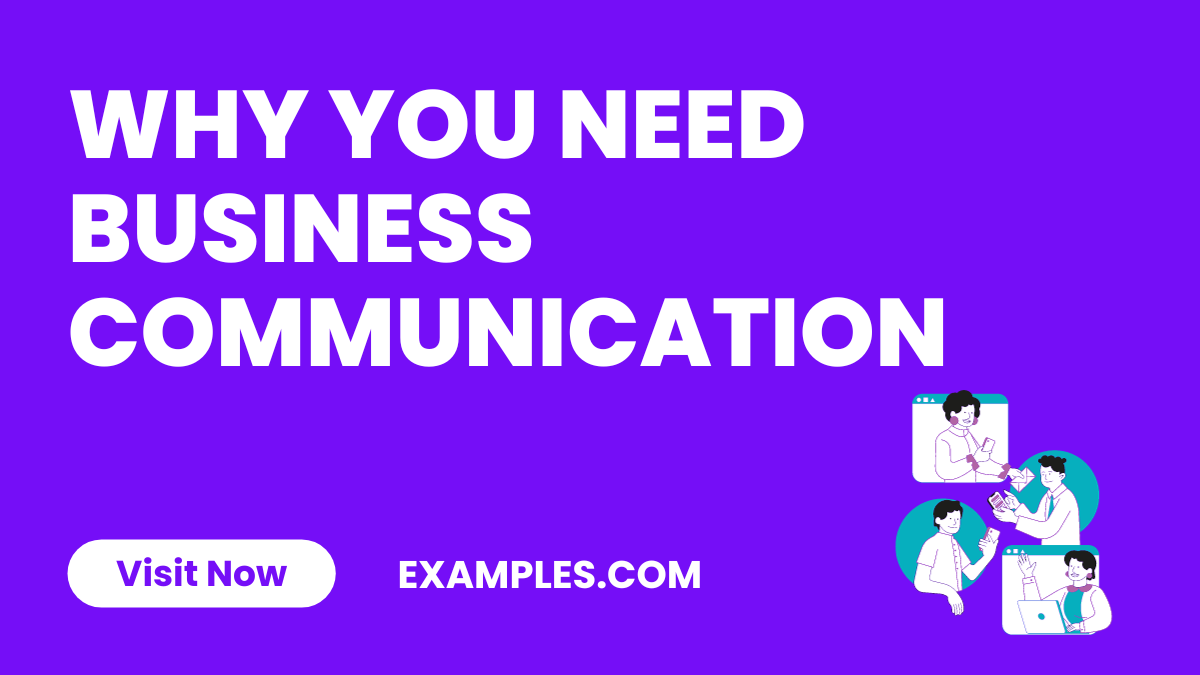Why you need Business Communication
What is Business Communication?
One of the best examples highlighting the necessity of Business Communication is a company’s response to a crisis. For instance, if a product defect is discovered, effective communication strategies are crucial. The company must quickly and transparently communicate with customers, employees, and stakeholders to address the issue. This involves issuing clear public statements, informing employees about the situation and how it’s being handled, and directly communicating with affected customers. Efficient communication in such a scenario helps to maintain customer trust, manage the company’s reputation, and ensure a coordinated response internally. This example demonstrates how vital business communication is for managing unforeseen challenges and maintaining a positive public image.
Why is Business Communication Important?
Enhances Clarity and Alignment: Clear communication aligns teams with business objectives and strategies.
Facilitates Effective Decision Making: Provides necessary information for informed decisions among stakeholders.
Builds and Maintains Relationships: Strengthens trust and reliability with employees, customers, and partners.
Key in Conflict Resolution and Crisis Management: Manages reputation and addresses challenges through coordinated responses.
Boosts Employee Morale and Engagement: Well-informed employees feel valued, increasing productivity and commitment.
Essential for Global Market Success: Overcomes cultural and language barriers in international business dealings.
Effective business communication is fundamental for operational success, building robust relationships, and ensuring a strong company presence in the global market
Types of Business Communication
- Internal Communication: Exchanges within the organization, like emails and meetings.
- External Communication: Interaction with clients, suppliers, and the public.
- Verbal Communication: Spoken interactions, both in-person and electronic.
- Non-Verbal Communication: Body language, gestures, and facial expressions.
- Written Communication: Emails, reports, letters, and memos.
- Visual Communication: Use of visuals like graphs, charts, and infographics
Which Business Communication Services Does My Business Need?
To determine which business communication services your business needs, consider the following:
- Email Communication Services: For day-to-day correspondence and document sharing.
- Instant Messaging Platforms: For quick, informal communication and collaboration.
- Video Conferencing Tools: Essential for remote meetings and presentations.
- Customer Relationship Management (CRM) Systems: To manage customer interactions and data.
- Internal Collaboration Tools: Like intranets or project management software for team coordination.
- Social Media Management Tools: For engaging with customers and marketing.
- VoIP Services: For cost-effective voice communication over the internet
Problems That Effective Business Communication Can Solve
Effective business communication can solve several problems, including:
- Misunderstandings and Misinterpretations: Clear communication eliminates confusion, ensuring messages are understood as intended.
- Low Employee Morale and Engagement: Regular and open communication boosts employee morale and fosters a sense of belonging.
- Poor Team Collaboration: Effective communication enhances teamwork, leading to improved collaboration and productivity.
- Customer Dissatisfaction: Clear communication with customers improves service quality and customer satisfaction.
- Inefficient Workflow: Streamlined communication leads to smoother workflow and operational efficiency.
- Resistance to Change: Open communication helps manage change by addressing concerns and reducing resistance.
What is the Importance of Non-verbal Communication in Business?
- Enhances Verbal Messages: Complements and reinforces spoken words, making communication more effective.
- Builds Trust and Rapport: Positive body language fosters trust and connections in business relationships.
- Facilitates Understanding: Helps convey emotions and attitudes, aiding in better interpretation of messages.
- Manages Impressions: Non-verbal cues can project confidence and professionalism.
- Aids in Conflict Resolution: Appropriate non-verbal communication can defuse tensions during disagreements.
- Improves Team Dynamics: Encourages a more collaborative and inclusive environment through open body language.
- Enhances Customer Interactions: Positive non-verbal communication improves customer service and satisfaction.
Steps to Set Up Your Business Communication Process
- Enhances Verbal Messages: Complements and reinforces spoken words, making communication more effective.
- Builds Trust and Rapport: Positive body language fosters trust and connections in business relationships.
- Facilitates Understanding: Helps convey emotions and attitudes, aiding in better interpretation of messages.
- Manages Impressions: Non-verbal cues can project confidence and professionalism.
- Aids in Conflict Resolution: Appropriate non-verbal communication can defuse tensions during disagreements.
- Improves Team Dynamics: Encourages a more collaborative and inclusive environment through open body language.
- Enhances Customer Interactions: Positive non-verbal communication improves customer service and satisfaction.
Setting up an effective business communication process involves several steps:
- Assess Communication Needs: Determine what communication methods are necessary for your business.
- Choose the Right Tools: Select tools and platforms that meet these needs, considering factors like user-friendliness and integration capabilities.
- Establish Communication Policies: Define guidelines for how and when different communication methods should be used.
- Train Your Team: Ensure everyone is familiar with the chosen tools and understands the communication policies.
- Implement a Feedback System: Allow for feedback on the communication process to identify and address any issues.
- Regularly Review and Adapt: Continuously assess the effectiveness of your communication process and make adjustments as needed.



